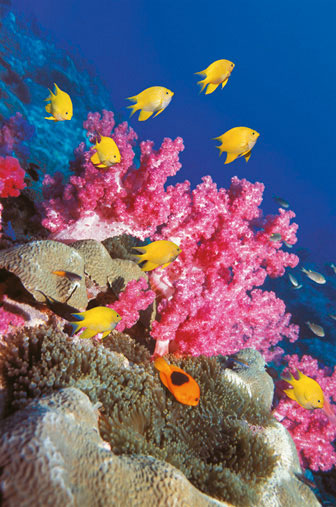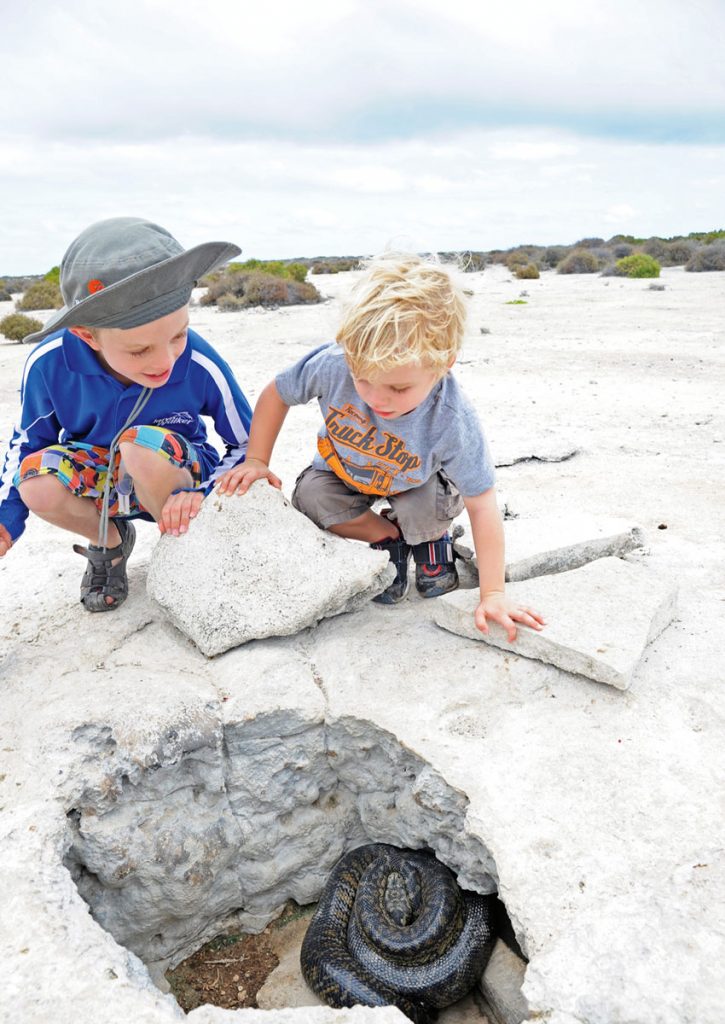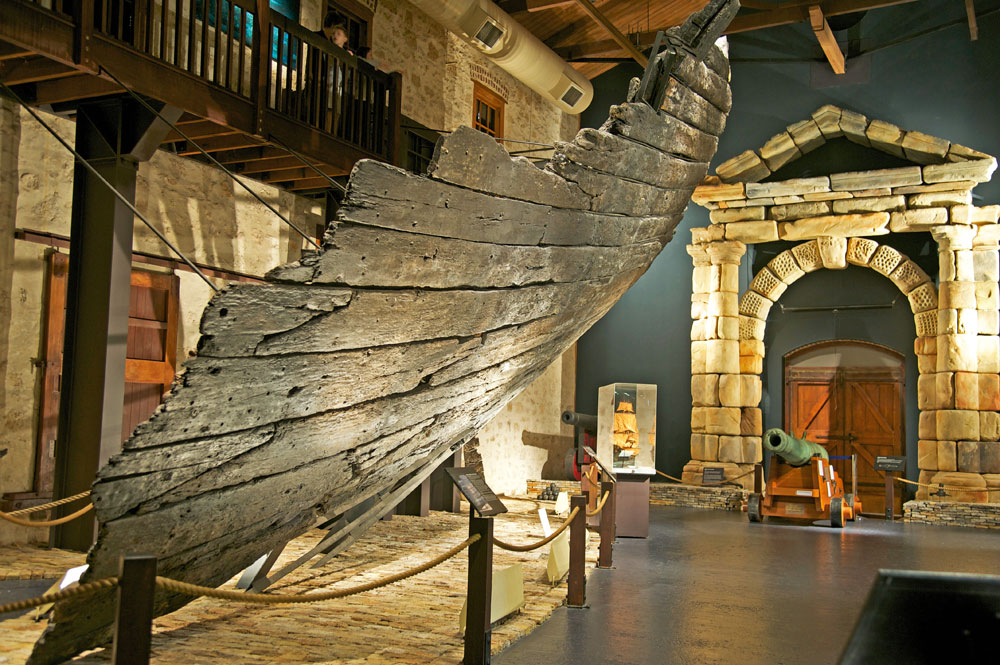Western Australia’s Houtman Abrolhos Islands are rich in history and wildlife.
By Emma George
Shipwreck, mutiny, murder and survival add to the mystique of the 122 remote and rugged islands of the Houtman Abrolhos, often referred to informally as the Abrolhos Islands, located off Geraldton on Western Australia’s mid-west coast.
Rich in history and sunken treasure, 20 shipwrecks have been found in Abrolhos waters and, while the Batavia and Zeewijk are the most well-known, there are thought to be many more lying undiscovered.
In addition to their colourful past, the Abrolhos Islands display a remarkable assortment of sea life, flora and fauna, with over two million birds breeding on the islands. Tropical and temperate oceans meet along the 100km spread of islands, treating anglers to a variety fish from pink snapper to coral trout and big pelagic species.
Famous for its superb diving, fishing, snorkelling, windsurfing and surfing, the Abrolhos is a destination we always wanted to visit. It was only when we purchased our seven-metre LeisureCat that we had a suitable vessel to attempt the voyage, which, in our case, was more than a 400km round trip.


WAITING FOR WEATHER
Following some marine chart preparation, our only problem was waiting for the perfect weekend, with very little wind and swell; a rare occurrence at the Abrolhos.
Our three boys, Austin (eight years old), Cooper (5) and Bailey (3), were as excited as we were about our big adventure. They had visited the shipwreck museum in Perth several times and were enthralled by stories of the Batavia – mutiny, lost treasure and particularly seeing the skeleton exhumed from Beacon Island, complete with a grizzly axe wound to the skull!
A perfect weekend loomed in March – the weather was set to be calm for the following five days – so I sprang into action, getting everything packed for an evening tow to Geraldton.
There are shacks on the Abrolhos owned by lobster fisherman who work there, but unless you have written consent to stay, all visitors must sleep on their own vessel and be fully self-sufficient.
SAFETY FIRST
Safety is paramount, particularly when attempting offshore trips. We took every extra piece of safety equipment we owned – a satellite phone, a spare EPIRB, a well-equipped first aid kit plus a new Yagi antenna to provide mobile phone coverage.
I filled the esky with ice, packed pre-made frozen meals and filled every available storage space in the boat with food, a small barbecue, some pots and eating utensils, snorkelling gear, fishing gear, inflatable body boards, cameras and plenty of extra fresh water.
Having towed the LeisureCat the last 100km of the drive on Saturday morning, we were greeted by the most spectacular view – the Indian Ocean was like a lake. We couldn’t have wished for a better weekend. We filled the boat with fuel and launched at the main Geraldton boat ramp.
We have done plenty of adventurous four-wheel drive trips and remote camping, but this was easily the biggest trip we had attempted in our boat. Totally self-sufficient, we felt like early explorers, ready to discover a shipwreck for the first time.


Our destination was the northern Wallabi Group of islands, around 50nm (90km) from Geraldton. I was hoping the swell would be minimal so Austin and I could snorkel the Batavia wreck.
My husband, Ashley was keen to catch some good sports fish, while Cooper was rather intrigued by the story of the Batavia mutiny and wanted to visit Long Island where the ‘baddies’ were hung. We were all hopeful of finding the Webbe-Hayes Forts, the oldest European-made structures in Australia, now 385 years old.
Travelling at 23 knots, we were making comfortable progress to the Wallabi Islands.
Undistracted by flocks of birds feeding on bait pushed up by tuna and other pelagic species, we focused on our initial goal – to find Batavia. We motored past big fish sounding on our Garmin and after almost two hours of travelling, land appeared in the distance.
Batavia ahoy!
As we approached Morning Reef, the shipwreck icon appeared on the sounder and we scouted for the sand patch, easily spotting a bright blue break in the reef. The planets had aligned – it was calm. Ashley dropped me off in three metres of water, then took the boat out deeper to avoid the dangerous reef ahead.
I was greeted by a massive coral trout, schools of buffalo bream and huge King George whiting as I hunted for remains of the wreck. As I swam further toward the reef I saw an anchor, then a cannon and yet another anchor. It was incredible. There I was in just two metres of water, looking at history, which has been in a watery grave for almost 400 years.

I yelled to everyone that we had found it and Austin quickly donned his fins and mask to join me, full of adrenaline. He held my hand and squealed with excitement as the cannons and anchors came into sight. This was a great experience shared with my eight-year-old, who was courageous enough to jump into an unknown ocean, with breaking waves behind us, to discover history.
After so much hype and anticipation, this experience surpassed all our expectations.
Tired after hours in the boat, it was time to hit the beach so we made our way to East Wallabi Island and the squeaky white sands of spectacular Turtle Bay.
There was only one other boat on a mooring buoy, so we had the island to ourselves and the kids ran along the beach searching for shells. Lizards scurried along the tracks and a majestic white-bellied sea eagle lurched into full flight as the boys approached its perch on the viewing platform.
I was pleasantly surprised to find a sun shelter, marked walking trails and numerous signs outlining the wildlife and history of the island. My only wish was that we could stay longer as our first day was nearly over.
After exploring the island, we motored to the public mooring, 100m offshore. Dinner and sleeping on the boat was cosy and cheerful and we were so excited about our day’s activities, we couldn’t wait for morning.
SIGHT FISHING

The visibility was amazing; some of the best I have seen. Coral trout were cruising between the fan-shaped coral and bommies, 12m below the boat. We could see fish following our soft plastics and the kids delighted in watching trout, emperor, cod and baldchin grouper take their lures.
With a wealth of fishing options, we headed for the deeper water and reef breaks for a bit of pelagic action. It didn’t take long for our deep diving lures to cause a stir, producing a good-sized Spanish mackerel.
But dinner was on the agenda so we changed direction again, this time targeting bottom-dwellers. Within minutes of dropping my bait, I hooked a lovely West Australian dhufish, my favourite eating fish. The crystal clear water was so inviting, it was time to pack away the rods and explore some of the closer reefs.
The water was so astonishingly calm and clear and the fish were indifferent to our presence. Coral trout poked their heads out to greet us and the kids swam over a two-to-three-metre shovel nosed shark, sleeping soundly beneath them.
We bobbed our heads under plate coral to see a large grouper, tropical fish swam past and stag horn coral and plate coral surrounded us, with about 30m of visibility in all directions.
It was a delight to be in this underwater wonderland, so spectacularly beautiful. As the sun approached the horizon, we stopped off for a quick exploration at Long Island, before mooring in Turtle Bay for our last night.

FORTIFICATIONS
With no clear boat passage, it was difficult to know which way to access the forts on West Wallabi Island.
I stood on the front of the boat, scouting coral bommies as we tried to find access from the eastern side. Fortunately, the presence of a sightseeing plane doing circuits around the island was a great clue as to the location of the forts.
We tracked further north with the water only 70cm deep and decided to drop anchor around 300m from shore and wade in.
I dragged the older boys on their inflatable boards and Bailey rode on Ashley’s shoulders as we headed for land. I envisaged the mutineers doing the same thing, but with their bare feet being torn to shreds on the jagged coral.
We clamoured up the sharp rocks to be met by a historic sign about the forts and how to look after the area. We couldn’t believe our luck; we had arrived in exactly the right location.
The boys ran ahead on the scrubby tracks, scaring the small wallabies in their haste to find the forts. We could hear excited yelling ahead; they had discovered a fort perched on the high point of the island.
Small enough to shelter 10 or so men, the hand-built structure has survived intact for over 385 years, despite cyclones and the roughest of weather imaginable. The shallow wells, which kept the soldiers alive, were still visible and a local carpet python had even taken up residence in one.
While the snake distracted the kids, I made my way to the second fort and hid some replica pewter Batavia coins I had secretly purchased at the Perth Shipwreck Museum and waited for them to find the ‘treasure’. The excitement on their faces was like Christmas morning.
With a two-hour boat trip and a five-hour drive home ahead of us, it was time to leave the Wallabi Group and head for Geraldton. This trip was one of our best weekends ever, but with so much more to do and see, we all can’t wait to return.
Mutiny, mayhem and murder

The story of the Batavia is one of the most shocking in Australian maritime history, involving the brutal murder of over 120 men, women and children by mutineers, who took control after the ship ran aground at the Abrolhos Islands on June 4, 1629.
Owned by the Dutch East India Company, she was on her maiden voyage to the Spice Islands (now known as the Maluku Islands of Indonesia), carrying a wealth of silver coins, gold and jewels. It was also one of the most heavily armed ships of its time.
The ship ran aground on a moonlit night and despite the crew’s best effort to offload ballast in the form of cannons and anchors, it could not be freed and finally broke apart on the reef a few days later. But there was enough time for most of the 322 people aboard to reach the nearby islands, although about 40 lives were lost in the treacherous seas.
Essential supplies were recovered, along with some of the treasure, but there was minimal fresh water and food available, with most surviving on sea lions, birds and shellfish. Commander Francisco Pelsaert, as well as some crew and passengers, left 268 survivors on two islands whilst they went in search of water.
Unsuccessful on mainland Australia, the party instead made its way in a nine-metre longboat to Batavia (modern Jakarta), to seek help. It took 33 days for the voyage; considered one of the greatest feats of navigation in an open boat.
Governor General Coen provided Pelsaert with the ‘jacht’ Saardam to rescue the survivors, but it took an incredible 63 days to re-locate the wreck site.
Mutinous murmurings
Senior officer Jeronimus Cornelisz had been scheming a mutiny for weeks and the shipwreck provided the perfect opportunity to take control, while Pelsaert was on his rescue mission. Cornelisz sent a group of soldiers under the command of Wiebbe Hayes to explore the islands that could be seen on the horizon. He confiscated their firearms before they left and assumed they would never return.
With his accomplices, Cornelisz then set about eliminating any potential opponents, murdering men, women and children, while keeping a few women for himself and his devotees.
As luck would have it, Wiebbe Hayes found water on West Wallabi Island and sent a smoke signal to alert Cornelisz. But some days later, survivors from Beacon Island swam to West Wallabi Island, informing the soldiers of Cornelisz’s murderous rampage.
Wiebbe Hayes and his men built forts from limestone and coral blocks and made weapons from materials washed up from the wreck. They kept watch during the night in anticipation of an attack.
Cornelisz did attack, but the soldiers were well fed and managed to win several battles, finally taking Cornelisz hostage. The mutineers who escaped regrouped under Wouter Loos and launched another attack, this time almost defeating the soldiers.
The mutineers’ plan was to hijack the rescue ship. The delusional Cornelisz even envisaged starting a new kingdom, using the gold and silver salvaged from the Batavia.
When the Saardam finally came into sight, both parties made a rush for the boat. Luckily, Wiebbe Hayes made it first, alerting Pelsaert to the atrocities of the past three months.
Pelsaert conducted a trial immediately. Cornelisz and several of the major mutineers had their hands chopped off before being hanged on the islands. Wouter Loos and a cabin boy were abandoned on mainland Australia, as they were considered minor offenders.
The remaining mutineers were taken to Batavia for trial, where five were hanged, with others receiving various punishments. A board of inquiry decided that Pelsaert had exercised a lack of authority and was partly responsible. His financial assets were seized, and he died a desperate man within a year.
Wiebbe Hayes was hailed a hero and promoted to sergeant and later lieutenant, which increased his salary immensely.
Of the 322 people on board the Batavia, only 68 made it to the port of Batavia alive.




